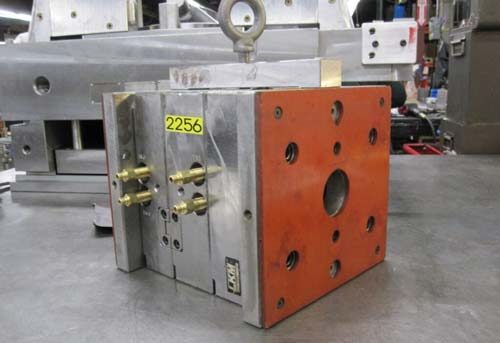With plastic injection molding, there are two types of mold configurations that may be used: standard self-contained molds and modular insert molds. Today, we’ll compare the key aspects of both types.
Self-Contained and Modular Insert Molds – Defined

Let’s start with a definition for each. Self-contained molds consist of all components integrated into a singular unit or a mold frame. These include the core, cavity, and other necessary components within a single base. Conversely, a modular insert mold is comprised of separate interchangeable components. The primary parts are the frame and the mold itself, which gets inserted into that frame.
Part Complexity
Self-contained molds are custom-made and, therefore can facilitate more complex part designs. When compared to modular insert molds, self-contained ones allow for intricate cavities, cores, and cooling channels.
There are some limits to what modular insert molds can handle. They can’t facilitate complex
operations involving for example gear assemblies. However, some insert molds can support
cam actions (side action).
Tooling Lead Times
Since self-contained molds are typically designed and fabricated from scratch, they take longer to produce. Conversely, insert mold frames are readily available, and while the insert itself does take some time to make, it’s much less than what’s required to build an entire self-contained mold from scratch.
Longevity
 In the world of injection molding, longevity translates to cycles. In other words, how many impressions can be made in that mold before it needs to be replaced? Note that, regardless of configuration, longevity also depends on various factors including material and maintenance. Self-contained molds tend to outlive insert molds, as they are usually comprised of higher-quality materials.
In the world of injection molding, longevity translates to cycles. In other words, how many impressions can be made in that mold before it needs to be replaced? Note that, regardless of configuration, longevity also depends on various factors including material and maintenance. Self-contained molds tend to outlive insert molds, as they are usually comprised of higher-quality materials.
Cost
Conversations around cost are rarely simple these days, and this topic is no exception. Let’s start here: self-contained molds have higher tooling costs due to their custom nature. Modular insert molds are lower in cost since they have interchangeable inserts, thus reducing the need for mold frames. Remember, with insert molds, you are essentially paying for the “guts” of the mold, and not the entire assembly including the frame, helping to keep a lid on tooling costs.
If design changes are made, insert molds win again. However, keep in mind that self-contained molds generally last longer, and the lifetime cost may be lower than an insert mold. Similarly, if only specific hi-wear components of the tooling need to be replaced over time, insert molds offer more flexibility since the entire tool doesn’t need to be rebuilt.
Before we wrap up, we need to talk about part volume. Let’s put tooling costs aside for a
moment. If the injected component is a high-run part, in the hundreds of thousands, then the
price of the components themselves will be lower with a multi-cavity self-contained mold. This
allows for multiple pieces to be made at one time, which significantly reduces cycle time and its
associated costs.
Which is Best?
So, what will it be, self-contained mold or modular insert? It depends. For instance, we have a customer who supports the aviation market, but their parts are simple and are ordered in short runs. Perfect for modular insert molds. Conversely, we have an automotive customer with an uncomplicated part, but we use a self-contained mold. If you’ve read this far, you know why – it’s a high-volume run (500,000+) produced with a multi-cavity mold.
While some jobs may use either, in the end, the decision will rely on the requirements of the job, including volume, complexity, frequency of design changes, and related considerations.

Comments are closed